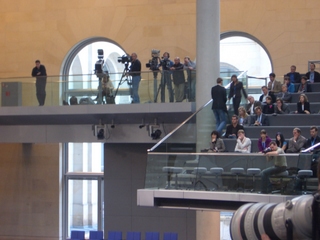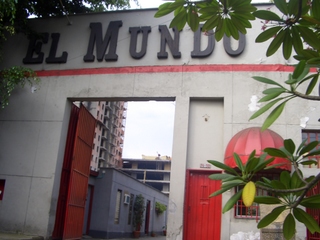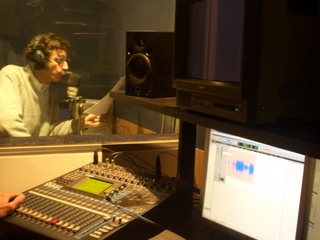Missing in the Media
In a highly corporatised world, Media is all about Mediations in the market place. The media mediations are often influenced by the demand and supply in the market place for news, views and entertainment. In India, Thailand and most of the countries in Asia, while political controversies, news about celebrities, and sensational scandals and murder mysteries find the front page, the issues that affect most of the people get pushed outside or deep inside as a single column news or fleeting image on the TV screen.
Media mediations are influenced by the middle class, by the market and the existing power-relations within the society. In fact, what is often termed as “Civil Society” in many countries is a reflection of the media, market and middle class. Because, the social attitude and social psychology of a particular country is shaped by the media mediations -including advertisements and images- , middle class interests and market tendencies. So often a market driven media surviving on the inclinations and interests of the middle class consumers tend to ignore unhappy stories about poverty, cast and gender discriminations, stigmatization, and atrocities against the poor. Hence, the dominant media in India is more keen to project the “shining India” image, rather than to show the “whining India”. While the up-coming upper middle class yuppie journalists are busy chasing the glamour and fashion world -and gossip circuit- for the page three “news” as entertainment, where will they get time to even glance at the little hells of slums, smell and smut right under their nose. That is the part of the problem – the stories of “paradise” on earth sells, and stories of “hells” on the earth do not have market value.
In fact, in a highly competitive world of rush for advertisement, circulation figures, stock market fluctuations, the notion of a “free” media is a bit of a myth. At the end of the day, the established media companies are more concerned about their profit than the people. So the “accountability” of the Free Media is often towards its owners and shareholders than to the poor and marginalized sections in a country. News paper has become a “product” that sells other “product”, even news and views are made to be “products”. Readers, Viewers and people become “consumers” of news and views – a market place to buy and sell.
Though millions of people live in slums of metropolitan cities in India, many of the journalists “discovered” those slums via the glamorous world of the Oscar-winning “British” film “Slumdog Millionaire”. Even there most of the journalists were more interested in the “millionaire” part and the “slumdogs” were either put under the carpet or pushed out of the slums.
The distance between the ever increasing stories of Millionaires to “Millennium Development Goals” is too big to cover. It is the distance of increasing inequality. It is the distance of unheard and untold stories of dying children, dying mothers, dirty streets, and dying villages in the deadly droughts. If you travel to Mumbai by train early in the morning, you can not escape a terrible stink: Mumbai in the morning smells of fresh shit! While the shining India is busy making the marbled bathrooms in their shining sky-scrappers, whining India simply will not have drinking water or basic sanitation. So they have to relieve themselves near the railway tracks in Mumbai.
If you ask someone from Dharavi -one of the biggest slums in Asia- about “Millennium Development Goals” they may not know whether it is a jack fruit or mango or the name of the latest thriller film from the Hollywood. They are not bothered about “MDGs”, they are bothered about their next meal, they are bothered about the impending monsoon and flood, and they are bothered about the increasing hospital bills during the monsoon. They are bothered to discover the dignity to shit in privacy. And media is not interested. Because that is too much of a depressing story. Media is more interested in the latest gown of Aisharya Rai or the latest fashion statement of the Bachan Family.
Hence, missing in the media is people, poverty, deprivation and the real issues of real people on the street, in the villages, in the dark corners of slums. Missing in the media is basic ethics and accountability. Missing in the media are those millions for whom the Millennium Development Goals are meant for.
Millennium Development Goals are more visible in the air-conditioned halls, in the power-point presentations by smart development professionals and policy wonks.
Part of the problem is in the media, and part of the problem is in the way “Millennium Development Goals” are “packaged and communicated.”
Hence it is important for the MDGs and Media to discover the unheard and untold stories of the real people in the real world in the congested sums and remote villages. People matter more than profits. People matter more than and those nice charts in the sexy power point presentation. Accountability to the People and not to the market tendencies, shareholder’s expectations, or “indicators“. Slum-dog Millionaire is one more example that showed: success comes from investigating hidden stories. How many reports traced, what happened to the protagonists of the movie after it had won the prices?
John Samuel
International Director Actionaid
Editor: Infochange News and Features
Next Blog by:
Milind Kokje (Mumbai/India), Coordinator of the Asia Media Forum and former, formerly journalist with 25 years of multimedia experience in the news agency (PTI), newspaper (Times of India), Internet (Indiatimes) and TV news (Zee news).










